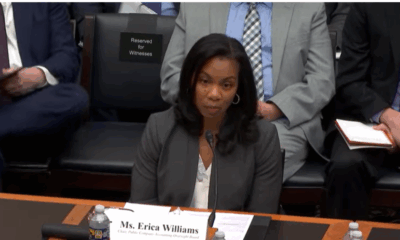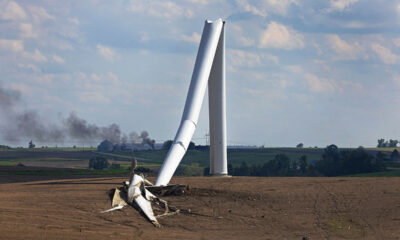Product prices as seen at Walmart.
Courtesy: Walmart
The news Tuesday was good for inflation, and investors hope it will get even better Wednesday when the Labor Department releases the July consumer price index report.
With the score being one down, one to go on confirming that the early-year jump in prices either was a fluke or the last gasp of inflation, a positive CPI reading could mean the Federal Reserve is able to turn its gaze to other economic challenges, such as the slowing labor market.
“At this point, the inflationary pressure that we saw build has really been dissipated significantly,” said Jim Baird, chief investment officer at Plante Moran Financial Advisors. “Inflation is almost a nonissue at this point. There’s this broad expectation that the worst is easily behind us.”
Like others on Wall Street, Baird expects the Fed in September to shift its focus from tight policy to tackle inflation to a somewhat easier stance to head off a potential weakening in the jobs picture.
While consumers and business owners continue to express concern over high prices, the trend indeed has shifted. Tuesday’s producer price index (PPI) report for July helped confirm optimism that the elevated inflation numbers that began in 2021 and spiked again in early 2024 are in the rearview mirror.
The PPI report, seen as a gauge of wholesale inflation, showed prices up just 0.2% in July and about 2.2% from a year ago. That number is now very close to the Fed’s 2% goal and indicative that the market’s impulse for the central bank to start cutting rates is about on target.
Economists surveyed by Dow Jones expect the CPI similarly to show 0.2% increases on both the all-items reading and the core measurement that excludes food and energy. However, that is projected to show respective 12-month rates of 3% and 3.2% — well below their mid-2022 highs but still a good distance from the Fed’s 2% target.
Still, investors are looking for the Fed at its September meeting to start cutting interest rates, considering that inflation is weakening and so is the labor market. The unemployment rate has now risen to 4.3%, a 0.8 percentage point increase over the past year that has triggered a time-tested recession flag known as the Sahm Rule.
“Given the focus on the relative weakening in the labor market, given the fact inflation is coming down pretty rapidly, and I expect it will continue over the next few months, it would be a surprise if the Fed didn’t start moving towards easing very quickly, presumably at the September meeting,” Baird said. “If they don’t at the September meeting, the market is not going to take kindly to that.”
Worries over slow Fed response
A brief pickup in weekly initial unemployment claims, combined with other weakening economic metrics, briefly had some in the market looking for an emergency rate cut.
While that sentiment has dissipated, there’s still worry about the Fed being slow to ease, just as it was slow to tighten when inflation began to escalate.
Another benign inflation report “makes the Fed completely comfortable that they can shift their focus away from inflation and toward labor,” said Tom Porcelli, chief U.S. economist at PGIM Fixed Income. “They could have shifted their attention from inflation to labor … months ago. There are cracks forming in the labor market backdrop.”
Amid the twin realities of declining inflation and rising unemployment, markets are pricing in the absolutely certainty of a rate cut at the Sept. 17-18 Fed meeting, with the only question left being how much. Futures pricing is roughly split between a quarter- or half-point reduction, and leaning heavily to the likelihood of a full percentage point reduction by the end of the year, according to CME Group calculations.
However, futures pricing has been well off the mark for most of the year. Traders started the year anticipating a rapid pace of cuts, then pulled back into expecting only one or two before the latest swing in the other direction.
“I’m as curious about [Wednesday’s] inflation report as anyone else, but I think it would take a real outlier to change the Fed’s tune from 1) shifting to labor as its focus, and 2) seriously thinking about cutting in September,” Porcelli said. “They should start off aggressively. I can easily make the argument for the Fed to cut 50 basis points just to kick things off because I think they should have been cutting already. I don’t think that’s what they will do. They’ll start it off modestly.”

 Accounting1 week ago
Accounting1 week ago
 Economics1 week ago
Economics1 week ago
 Personal Finance1 week ago
Personal Finance1 week ago
 Accounting1 week ago
Accounting1 week ago
 Finance1 week ago
Finance1 week ago
 Economics1 week ago
Economics1 week ago
 Economics1 week ago
Economics1 week ago
 Economics1 week ago
Economics1 week ago
























